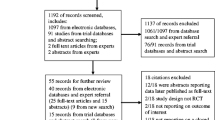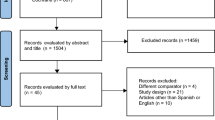Abstract
Objective
To test the feasibility of and interactions among three software-driven critical care protocols.
Design
Prospective cohort study.
Setting
Intensive care units in six European and American university hospitals.
Patients
174 cardiac surgery and 41 septic patients.
Interventions
Application of software-driven protocols for cardiovascular management, sedation, and weaning during the first 7 days of intensive care.
Measurements and results
All protocols were used simultaneously in 85% of the cardiac surgery and 44% of the septic patients, and any one of the protocols was used for 73 and 44% of study duration, respectively. Protocol use was discontinued in 12% of patients by the treating clinician and in 6% for technical/administrative reasons. The number of protocol steps per unit of time was similar in the two diagnostic groups (n.s. for all protocols). Initial hemodynamic stability (a protocol target) was achieved in 26 ± 18 min (mean ± SD) in cardiac surgery and in 24 ± 18 min in septic patients. Sedation targets were reached in 2.4 ± 0.2 h in cardiac surgery and in 3.6 ± 0.2 h in septic patients. Weaning protocol was started in 164 (94%; 154 extubated) cardiac surgery and in 25 (60%; 9 extubated) septic patients. The median (interquartile range) time from starting weaning to extubation (a protocol target) was 89 min (range 44–154 min) for the cardiac surgery patients and 96 min (range 56–205 min) for the septic patients.
Conclusions
Multiple software-driven treatment protocols can be simultaneously applied with high acceptance and rapid achievement of primary treatment goals. Time to reach these primary goals may provide a performance indicator.







Similar content being viewed by others
References
Smith CA, Corripio AB (2005) Principles and practices of automatic process control, 3rd edn. Wiley, New York
Kress JP, Pohlman AS, O'Connor MF, Hall JB (2000) Daily interruption of sedative infusions in critically ill patients undergoing mechanical ventilation: N Engl J Med 342:1471–1477
Brook AD, Ahrens TS, Schaiff R, Prentice D, Sherman G, Shannon W, Kollef MH (1999) Effect of a nursing-implemented sedation protocol on the duration of mechanical ventilation. Crit Care Med 27:2609–2615
Ely EW, Baker AM, Dunagan DP, Burke HL, Smith AC, Kelly PT, Johnson MM, Browder RW, Bowton DL, Haponik EF (1996) Effect on the duration of mechanical ventilation of identifying patients capable of breathing spontaneously. N Engl J Med 335:1864–1869
Kollef MH, Shapiro SD, Silver P, St. John RE, Prentice D, Sauer S, Ahrens TS, Shannon W, Baker-Clinkscale D (1997) A randomized, controlled trial of protocol-directed versus physician-directed weaning from mechanical ventilation. Crit Care Med 25:567–574
The Acute Respiratory Distress Syndrome Network (2000) Ventilation with lower tidal volumes as compared with traditional tidal volumes for acute lung injury and the acute respiratory distress syndrome. N Engl J Med 342:1301–1308
McKinley BA, Moore FA, Sailors RM, Cocanour CS, Marquez A, Wright RK, Tonnesen AS, Wallace CJ, Morris AH, East TD (2001) Computerized decision support for mechanical ventilation of trauma induced ARDS: results of a randomized clinical trial. J Trauma 50:415–424
Rivers E, Nguyen B, Havstad S, Ressler J, Muzzin A, Knoblich B, Peterson E, Tomlanovich M, Early Goal-Directed Therapy Collaborative Group (2001) Early goal-directed therapy in the treatment of severe sepsis and septic shock. N Engl J Med 345:1368–1377
Wilson J, Woods I, Fawcett J, Whall R, Dibb W, Morris C, McManus E (1999) Reducing the risk of major elective surgery: randomised controlled trial of preoperative optimisation of oxygen delivery. Br Med J 318:1099–1103
Pearse R, Dawson D, Fawcett J, Rhodes A, Grounds RM, Bennett ED (2005) Early goal-directed therapy after major surgery reduces complications and duration of hospital stay. A randomised, controlled trial. Crit Care 9:R687–R693
Polonen P, Ruokonen E, Hippelainen M, Poyhonen M, Takala J (2000) A prospective, randomized study of goal-oriented hemodynamic therapy in cardiac surgical patients. Anesth Analg 90:1052–1059
McKendry M, McGloin H, Saberi D, Caudwell L, Brady AR, Singer M (2004) Randomised controlled trial assessing the impact of a nurse delivered, flow monitored protocol for optimisation of circulatory status after cardiac surgery. Br Med J 329:258
Ely EW, Bennett PA, Bowton DL, Murphy SM, Florance AM, Haponik EF (1999) Large scale implementation of a respiratory therapist-driven protocol for ventilator weaning. Am J Respir Crit Care Med 159:439–446
Scheinhorn DJ, Chao DC, Stearn-Hassenpflug M, Wallace WA (2001) Outcomes in post-ICU mechanical ventilation: a therapist-implemented weaning protocol. Chest 119:236–242
Burns SM, Earven S, Fisher C, Lewis R, Merrell P, Schubart JR, Truwit JD, Bleck TP, University of Virginia Long Term Mechanical Ventilation Team (2003) Implementation of an institutional program to improve clinical and financial outcomes of mechanically ventilated patients: one-year outcomes and lessons learned. Crit Care Med 31:2752–2763
Trzeciak S, Dellinger RP, Abate NL, Cowan RM, Stauss M, Kilgannon JH, Zanotti S, Parrillo JE (2006) Translating research to clinical practice: a 1-year experience with implementing early goal-directed therapy for septic shock in the emergency department. Chest 129:225–232
Author information
Authors and Affiliations
Corresponding author
Additional information
These authors performed this study on behalf of the CPIC Study Group.
Conflicts of interest: This trial was investigator initiated and received funding from TEKES (Finnish funding agency for technology and innovation), and from Deio (Helsinki, Finland) to cover part of the research personnel costs and the costs of data collection and statistical analysis. The software prototype was written by Deio based on specifications from the investigators. Author K.K. is an employee of Intensium (Kuopio, Finland), a company that managed the data collection and statistical analysis. No other conflicts of interest are declared.
Electronic supplementary material
Rights and permissions
About this article
Cite this article
Takala, J., Dellinger, R.P., Koskinen, K. et al. Development and simultaneous application of multiple care protocols in critical care: a multicenter feasibility study. Intensive Care Med 34, 1401–1410 (2008). https://doi.org/10.1007/s00134-008-1084-x
Received:
Accepted:
Published:
Issue Date:
DOI: https://doi.org/10.1007/s00134-008-1084-x




